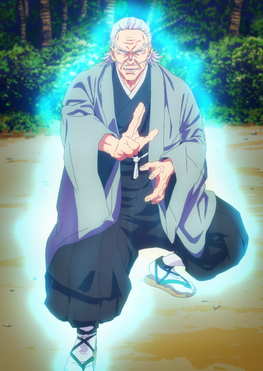Cherry Blossom Epiphany – the poetry and philosophy of a flowering tree – a selection, translation and lengthy explication of 3000 haiku, waka, senryû and kyôka about a major theme from I.P.O.O.H. (In Praise Of Olde Haiku)by robin d. gill 1. Haiku -Translation from Japanese to English 2. Japanese poetry – 8c-20c – waka, haiku and senryû 3. Natural History – flowering cherries 4. Japan – Culture – Edo Era 5. Nonfiction – Literature 6. Translation – applied 7. You tell me! If the solemn yet happy New Year’s is the most important celebration of Japanese (Yamato) ethnic culture, and the quiet aesthetic practice of Moon-viewing in the fall the most elegant expression of Pan-Asian Buddhism=religion, the subject of this book, Blossom-viewing – which generally means sitting down together in vast crowds to drink, dance, sing and otherwise enjoy the flowering cherry in full-bloom – is less a rite than a riot (a word originally meaning an ‘uproar’). The major carnival of the year, it is unusual for being held on a date that is not determined by astronomy, astrology or the accidents of history as most such events are in literate cultures. It takes place whenever the cherry trees are good and ready. Enjoyed in the flesh, the blossom-viewing, or hanami, is also of the mind, so much so, in fact, that poetry is often credited with the spread of the practice over the centuries from the Imperial courts to the maids of Edo. Nobles enjoyed link-verse contests presided over by famous poet-judges. Hermits hung poems feting this flower of flowers (to say the generic “flower” = hana in Japanese connotes “cherry!”) on strips of paper from the branches of lone trees where only the wind would read them. In the Occident, too, flowers embody beauty and serve as reminders of mortality, but there is no flower that, like the cherry blossom, stands for all flowers. Even the rose, by any name, cannot compare with the sakura in depth and breadth of poetic trope or viewing practice. In Cherry Blossom Epiphany, Robin D. Gill hopes to help readers experience, metaphysically, some of this alternative world. Haiku is a hyper-short (17-syllabet or 7-beat) Japanese poem directly or indirectly touching upon seasonal phenomena, natural or cultural. Literally millions of these ku have been written, some, perhaps, many times, about the flowering cherry (sakura), and the human activity associated with it, blossom-viewing (hanami). As the most popular theme in traditional haiku (haikai), cherry-blossom ku tend to be overlooked by modern critics more interested in creativity expressed with fresh subjects; but this embarrassment of riches has much to offer the poet who is pushed to come up with something, anything, different from the rest and allows the editor to select from what is, for all practical purposes, an infinite number of ku. Literary critics, take note: Like Rise, Ye Sea Slugs! (2003) and Fly-ku! (2004), this book not only explores new ways to anthologize poetry but demonstrates the practice of multiple readings (an average of two per ku) as part of a composite translation turned into an object of art by innovative clustering. Book-collectors might further note that while Cherry Blossom Epiphany may not be hardback, it takes advantage of the many symbols included with Japanese font to introduce design ornamentation (the circle within the circle, the reverse (Buddhist) swastika, etc.) hitherto not found in English language print. It is a one-of-a-kind work of design by the author.
Falling Blossom Emotion

Falling Blossom Emotion ( 落 ( らっ ) 花 ( か ) の 情 ( じょう ) , Rakka no Jō ? ) is a secret art passed down in the Big Three Sorcerer Families as a countermeasure to domains.
Contents
Unlike Simple Domain, in which the user manifests their own domain to nullify a domain expansion’s auto-hit attack, Falling Blossom Emotion shrouds the user in cursed energy that counter-attacks the moment a domain’s guaranteed hit makes contact. The cursed energy defends the user automatically, countering any attack with equal force to nullify it. [1]
Falling Blossom Emotion changes when its power is applied to swordplay. Not only is the user shrouded in cursed energy, but their sword is as well. This allows the blade to automatically strike anything the cursed energy comes into contact with. [2]
Usage
Naobito Zenin
Naobito Zenin, former head of the Zenin Family at the time, first showcased this technique in his jujutsu battle with Dagon.
Dagon trapped Naobito’s team inside his domain and attacked them with an endless stream of shikigami enhanced by the domain’s guaranteed hit. Naobito was able to resist the early onslaught of fish shikigami by using Falling Blossom Emotion to cut them apart as they approached him. Even when the number of shikigami was infinitely increased by Dagon’s Death Swarm technique, Falling Blossom Emotion was still able to protect Naobito. [3]
However, the pure endless volume of shikigami never slowed down and it blocked Naobito’s view, allowing Dagon to get close and punch him. This proved that while Falling Blossom Emotion can resist cursed techniques, it provides little to no defense against physical attacks. [4]
Ogi Zenin
Ogi Zenin utilized the offensive side of Falling Blossom Emotion in a standoff with Maki. He shrouded himself in cursed energy and prepared to strike down his daughter with one mighty single-strike attack. However, this was ineffective against the abilities of Maki’s Dragon-Bone cursed tool, which can absorb and eject cursed energy. [5]


